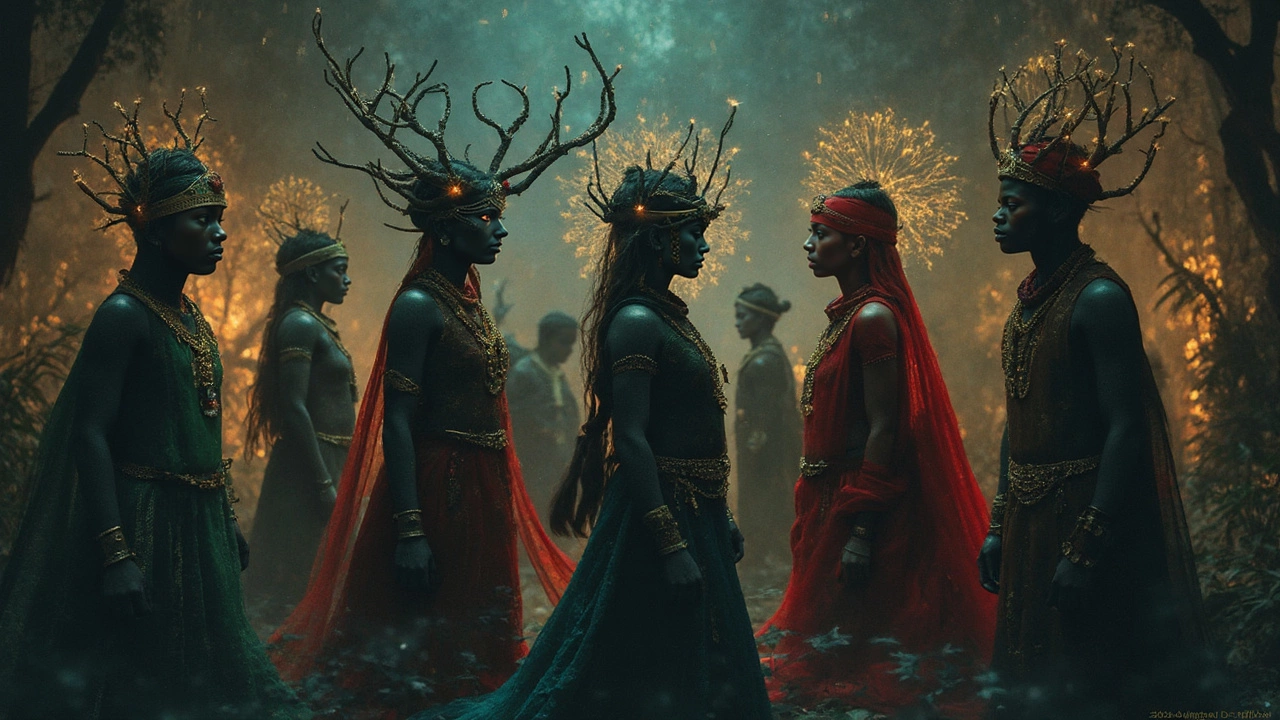Asuras in Tamil and Hindu Mythology: Demons, Gods, and the Battle Between Good and Evil
When you hear the word asuras, powerful, often antagonistic beings in Hindu and Tamil mythologies who clash with the devas, or gods. Also known as demon kings, they’re not just evil monsters—they’re complex figures who challenge authority, seek knowledge, and sometimes win. In Tamil tradition, asuras appear in temple carvings, folk songs, and ritual dramas like Theru Koothu, where their battles with gods aren’t just stories—they’re lessons about pride, ambition, and balance.
Asuras aren’t just enemies of the gods. In many ancient texts, they’re the sons of Kashyapa and Diti, making them brothers to the devas, the celestial deities who represent order, light, and cosmic harmony in Hindu belief. The real conflict isn’t good vs. evil—it’s control vs. freedom, structure vs. chaos. Take Mahabali, the asura king who ruled so justly that even the gods feared his popularity. He’s still honored in Kerala and Tamil Nadu during Onam, where people lay flower carpets and feast in his memory. That’s not a demon worship—it’s a cultural nod to a ruler who gave more than he took.
The Tamil folklore, a rich oral tradition of myths, songs, and rituals passed down through generations in Tamil Nadu doesn’t always paint asuras as villains. In village tales, they’re often tricksters or misunderstood spirits who guard sacred places. Some stories even link them to nature—mountains, rivers, storms—making them part of the land’s spirit, not just myth. This mirrors how Tamil Nadu’s folk dances like Karakattam and Puliyattam sometimes portray asuras as masked figures, their movements wild but rhythmic, their presence necessary to the story’s tension.
And then there’s the Hindu mythology, the vast system of stories, symbols, and beliefs that shape religious and cultural life across India. Here, asuras like Ravana, Hiranyakashipu, and Bana are more than plot devices—they’re mirrors. Ravana’s ten heads? Not just power—he’s the ultimate scholar who knew the Vedas but let ego destroy him. Hiranyakashipu’s curse? A warning that no one, not even a god’s son, is above cosmic law. These aren’t fairy tales. They’re ethical frameworks wrapped in epic battles.
What ties all this together? The idea that power without wisdom is dangerous. That rebellion can be righteous. That even the so-called demons have a place in the cosmic dance. You’ll find this theme running through every post in this collection—from how asuras appear in Tamil temple art to why they’re still referenced in modern debates about authority and justice. Some articles dig into their origins in the Vedas. Others explore how they’re portrayed in folk theater. A few even compare them to figures from other mythologies, like Titans or fallen angels.
There’s no single answer to who the asuras really are. But that’s the point. They’re not meant to be simple villains. They’re the shadow that makes the light meaningful. Whether you’re reading about a 2,000-year-old Tamil carving or a modern retelling of Ravana’s story, you’re not just learning about demons. You’re learning about the people who told these stories—and why they still matter today.
